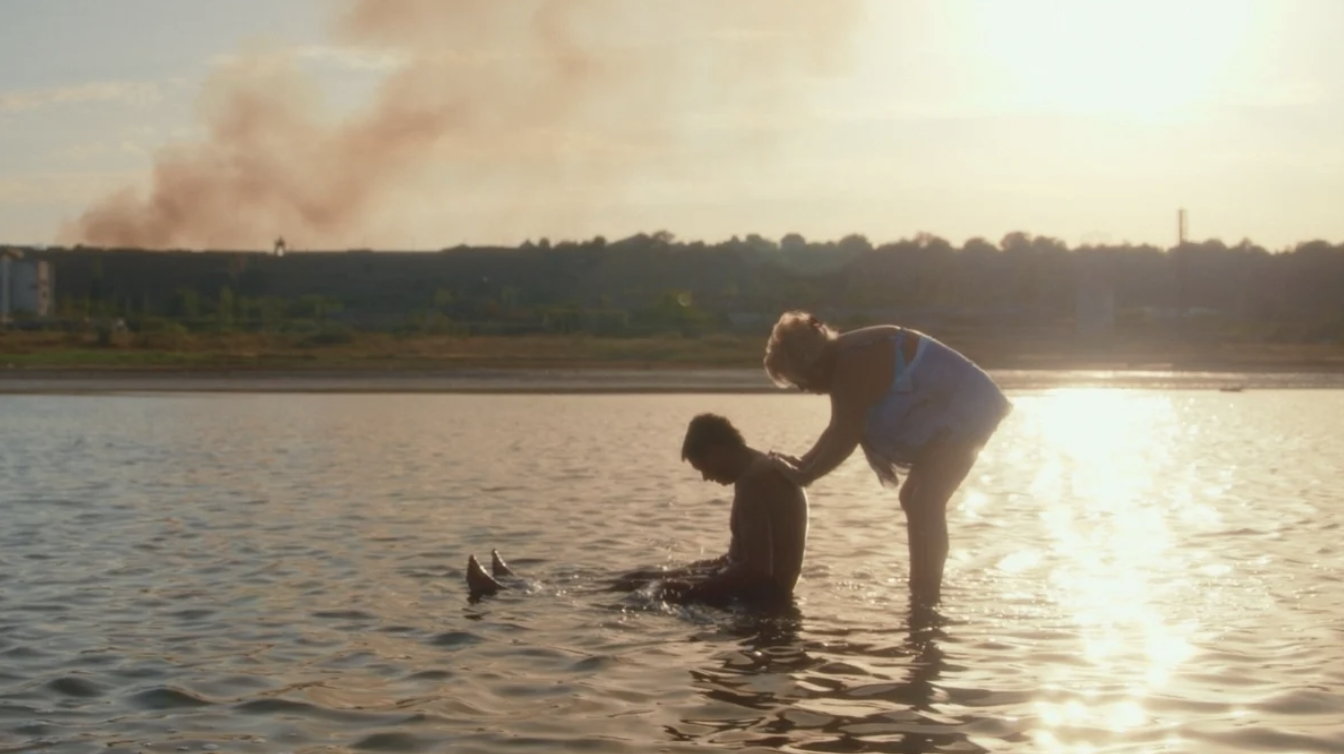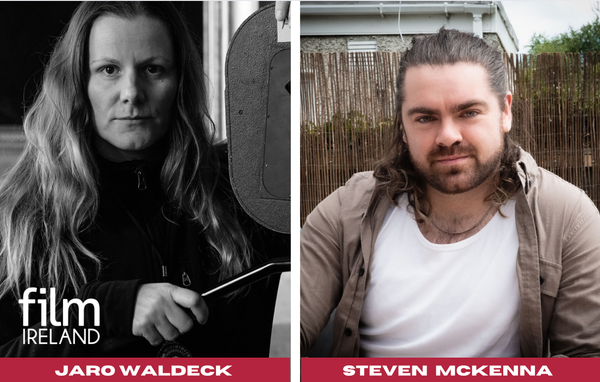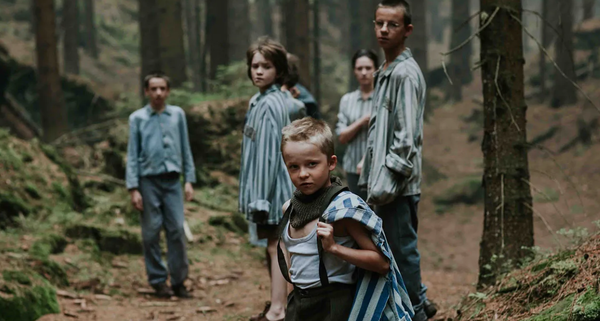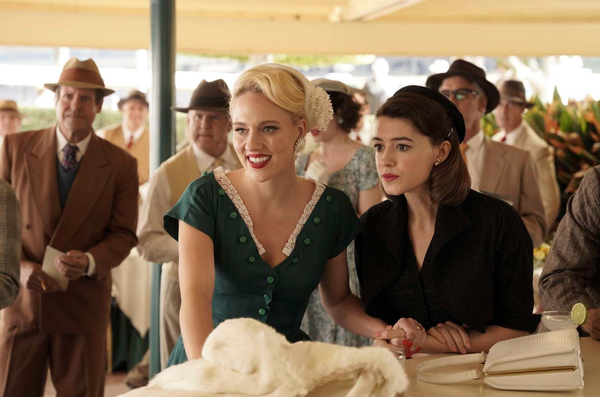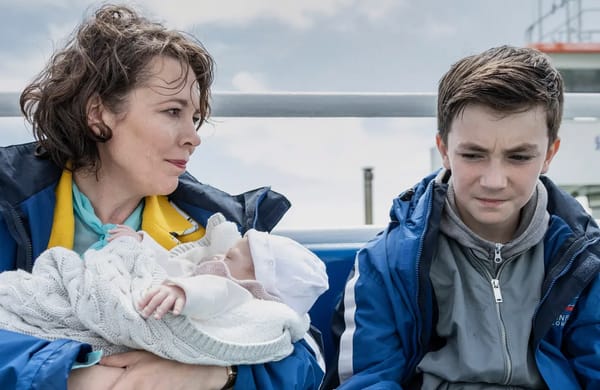Gemma Creagh checks in to Ireland's Best International Feature Film nominee, Sanatorium.
At the upcoming 98th Academy Awards, Sanatorium will represent Ireland as our nomination for the Best International Feature Film category. This choice is fitting, as Ukraine’s fight against occupation echoes our own history so closely. Living though conflict forges a society. Culturally our two nations have so much in common, from our enjoyment of potatoes, traditions in music and storytelling, hospitality, and, of course, our cutting, often dark sense of humour. Classic intergenerational trauma. The one thing the Ukrainian people do very differently to us, however, is their holistic attitude towards health.
The Kuyalnik Sanatorium sits by an estuary near Odesa. This imposing brutalist structure dominates the area, with the city’s skyline visible across the water. In Ukraine, these Soviet-era sanatoriums are state-funded medical spas that combine leisure with wellness and clinical-style treatments. They offer a ‘vacation’ of sorts, where people can treat a wide range of ailments by taking weeks away from their day-to-day lives and prioritising their wellbeing. A reset.
In recent years, not only has Kuyalnik’s former glory faded, it’s crumbling. Literally. The roof of the main auditorium is on the verge of collapse. Facilities manager Dimitry and his small team do what they can to keep the lights on and the place running - well, perhaps except for Igor, who appears to be frequently running amok. In Kuyalnik, resources are stretched thin. There are beds without linen, black mould lines the sinks and décor that, for the most part, hasn’t been upgraded since the 1970s. Now, with occupancy hovering at only 18 per cent and jets flying overhead, things aren’t looking good for the future of the institution. However, there’s something important happening within its walls.
This observational documentary - the debut of director Gar O’Rourke - focuses on the lives of both the sanatorium staff and their guests who come looking for help. The chatty Natalia has booked in with her forty-ish-year-old son Andriy. While she cites medical reasons for the stay, her actions suggest that her real aim is to find him a wife. He doesn’t seem quite as keen. Meanwhile, Valaria and her husband have been trying unsuccessfully to have children for some time. She dreams of becoming a mother, sadness etched across her face as the other women at the retreat console her or give well-meaning advice. A war veteran is midway through his lengthy rehabilitation, with scars that go far deeper than the physical, while one woman treats her skin condition as she struggles under the weight of her grief. The war took her husband from her about a year ago. Now she’s processing what life will look like without him. The facility’s Medical Director, Olena, listens diligently and prescribes a course of treatment for each of them. During her years at the sanatorium, she’s seen it all before.
On top of medical care, the list of procedures and activities is vast; body wraps, electrotherapy, massages, high-pressure water showers, hot stones, cathodes, water aerobics and beaded foot massages are all on the itinerary. But above all, the mud - that therapeutic ‘black gold’ - has been a draw since the 1970s. There’s a thriving social scene too, with singing, chess, ping pong and cards. The charismatic in-house entertainer is tasked with ensuring the guests enjoy their stay. Midway through the film, she wheels a speaker into a vacant room that soon becomes a bustling disco, complete with disco ball, flashing lights and loud music. She works the decks. Unfortunately for Natalia, the average age is a bit too high for her to find Andriy a match, but it doesn’t stop her trying.
The heart of this film lies in its warmth, grounded in the minutiae of routine. Gar has built a deep rapport with each of these subjects. This space of trust allows not only for authenticity, but for a surprising helping of humour. There’s a natural wit to the region - which Irish audiences will undoubtedly feel as familiar - that pairs well with the physical comedy of the more eccentric procedures. Gar finds frequent examples of levity juxtaposed with the undercurrent of something darker: an older man in comically small speedos wanders by the water’s edge clutching a plastic bag, while ominous smoke billows from the city in the distance. The chat and joking flirtations of card games lead to a small and devastating declaration about how these widowed women are doomed to be single. All the men are gone. These are just a few of the small but regular reminders of how the war looms ever-present, lapping at the periphery at all times. In the opening scenes, an alarm blares loudly, urging residents to move to safety. The staff barely bat an eyelid. This is daily life here.
Sanatorium was in development long before the conflict broke out. Gar first visited Kyiv in 2018 while developing his short Kachalka. During lockdown, a Ukrainian friend introduced him to the concept of these sanatoriums, and he was fascinated by the idea of documenting a restorative retreat. Nearly a year before Russia’s invasion, he sampled the sanatorium experience first-hand. Unfortunately, the reality of the situation became more dramatic than anyone could have ever planned for.
In terms of aesthetic, Sanatorium is wholly cinematic. Dated interiors, vast geometric construction, burnt-orange walls, contrasting to sharp blues and faded patterns are captured so strikingly by Ukrainian Director of Photography Denys Melnyk. His keen eye, paired with Gar’s intuitive empathy, builds a piece of work that is nothing short of beautiful across all fronts. Wide shots capture the pyramid-like grandeur of the sanatorium’s architecture, its massive symmetry and scale, while close-ups show tired workers patching leaks, or a small green egg timer counting down as a hopeful woman soaked in mud, cocooned like a burrito prays for a baby.
In one key moment, however, this visual style shifts. Carefully composed shots give way to handheld urgency as guests rush to the basement for safety. There, in the middle of the night, exhausted guests scroll through phones for news, information and to check in on the safety of their loved ones. The film closes just after Ukraine’s 32nd Independence Day. The usual boisterous spirits and cutting banter fall quiet as the guests and staff gather to sing for Ukraine. Olena gives an emotive and hopeful speech, her voice breaking and tears welling in the eyes of her staff and guests. A heavy burden has been placed on the shoulders of these average, very recognisable people. Mothers, doctors, grandfathers, misbehaving ground staff, they are all trying their best to get through each day. Ultimately, Sanatorium examines the profound toll taken in the largest and deadliest war in Europe since World War II.
Despite Dimitry and Olena’s best efforts, year after year, fewer people come to Kuyalnik, and the building continues to crumble. Some spaces need to be protected. If the roof falls and the walls cave in under the weight of all, what will be left for the people of Ukraine when the war is over?
Sanatorium is in cinemas 5th September 2025.

